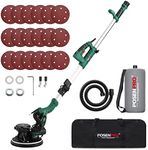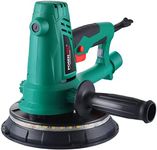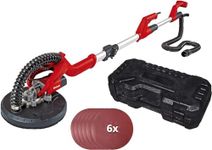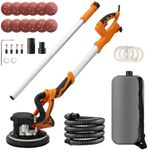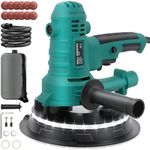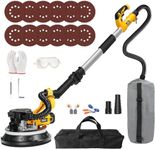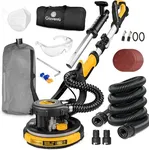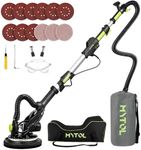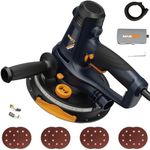Buying Guide for the Best Electric Drywall Sanders
Choosing the right electric drywall sander can make your sanding tasks more efficient and less labor-intensive. These tools are designed to smooth out drywall surfaces, making them ready for painting or finishing. When selecting an electric drywall sander, it's important to consider the specific needs of your project, such as the size of the area to be sanded, the type of finish you desire, and your own comfort and experience level with power tools. Understanding the key specifications will help you make an informed decision.Motor PowerMotor power, measured in watts or amps, determines the sander's ability to handle tough sanding jobs. A more powerful motor can handle larger areas and tougher materials more efficiently. Typically, motor power ranges from 500 to 1000 watts. For small to medium projects, a motor on the lower end of this range may suffice. However, for larger projects or professional use, a higher wattage motor will provide the necessary power and efficiency.
Variable Speed ControlVariable speed control allows you to adjust the sander's speed to suit different tasks and materials. This feature is important because different surfaces and finishes require different speeds for optimal results. Speed is usually measured in revolutions per minute (RPM), and a range of 600 to 1500 RPM is common. For delicate surfaces or fine finishes, a lower speed is preferable, while higher speeds are better for removing more material quickly. Choose a sander with a speed range that matches the variety of tasks you plan to undertake.
Dust Collection SystemA dust collection system is crucial for maintaining a clean work environment and minimizing health risks associated with drywall dust. This feature typically includes a vacuum attachment or a built-in dust bag. A good dust collection system will efficiently capture dust, making cleanup easier and reducing airborne particles. If you are working in a small or enclosed space, or if you prioritize cleanliness, look for a sander with an effective dust collection system.
Sanding Pad SizeThe size of the sanding pad affects the coverage area and the precision of the sander. Common sizes range from 7 to 9 inches in diameter. Larger pads cover more area quickly, making them suitable for large, flat surfaces. Smaller pads offer more control and are better for detailed work or tight spaces. Consider the type of projects you will be working on to determine the appropriate pad size for your needs.
Weight and ErgonomicsThe weight and ergonomic design of a sander impact user comfort and ease of use, especially during extended periods of work. Lighter sanders are easier to maneuver and less tiring to use, while heavier models may offer more stability. Ergonomic features such as adjustable handles and comfortable grips can reduce strain and improve control. If you anticipate long sanding sessions or have limited strength, prioritize a lightweight and ergonomically designed sander.
Reach and FlexibilityReach and flexibility refer to the sander's ability to access high or awkward areas. Some models come with extendable handles or flexible heads to reach ceilings and corners more easily. This feature is particularly important for large projects or when working on ceilings. If your projects involve a lot of overhead work or hard-to-reach areas, consider a sander with good reach and flexibility options.

